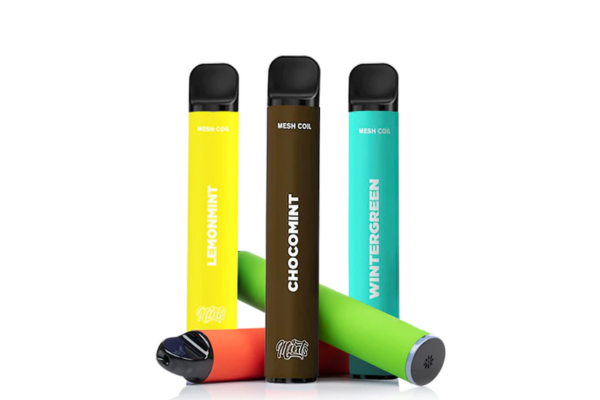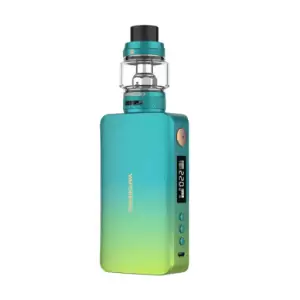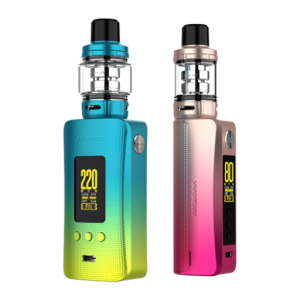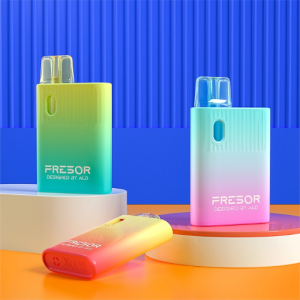The global landscape of smoking alternatives has witnessed a remarkable shift with the rise of disposable vapes. These devices, celebrated for their convenience and wide array of flavors, have surged in popularity across diverse demographics. From seasoned smokers looking for a cleaner alternative to novices drawn by the sheer ease of use, disposable vapes have carved a significant niche in the global tobacco market. This trend underscores a broader movement towards vaping as a preferred method of nicotine consumption, reflecting changing consumer preferences and technological advancements in the field.
However, the burgeoning popularity of disposable vapes brings to the fore the complexity of navigating the regulatory environment that governs their use. With laws varying significantly from one jurisdiction to another, the importance of being well-informed about the latest regulations cannot be overstated, especially for travelers. National and local governments worldwide have been grappling with how to regulate these products, balancing public health concerns with the rights of individuals to choose their smoking alternatives. Regulations cover a wide spectrum, from complete bans in certain countries to specific restrictions on sale, distribution, and use in others.
As disposable vapes continue to gain traction, staying abreast of these regulations becomes crucial for users, particularly those planning to travel. Being informed not only ensures compliance with local laws but also helps in making responsible choices that align with global efforts to ensure public health and safety. This guide aims to provide an authoritative overview of the current state of disposable vape regulations across key global locations, offering valuable insights for anyone looking to navigate the complexities of vaping laws in 2024.

Understanding Disposable Vapes
Disposable vapes have emerged as a prominent feature in the vaping landscape, distinguished by their single-use design and wide availability. These devices are pre-filled with e-liquid and equipped with a pre-charged battery, designed to be disposed of once the e-liquid is depleted or the battery runs out. The appeal of disposable vapes lies in their convenience and ease of use, making them particularly attractive to both seasoned smokers transitioning away from traditional cigarettes and new users exploring vaping.
Definition and Features of Disposable Vapes
A disposable vape is a compact, non-rechargeable device pre-filled with e-liquid. These devices are ready to use right out of the package, eliminating the need for refilling or recharging—key factors that contribute to their popularity. Disposable vapes come in a variety of flavors, offering users a broad spectrum of choices, from traditional tobacco and menthol to fruit and dessert options.
Reasons Behind the Specific Regulations Targeting Disposable Vapes
The regulation of disposable vapes is influenced by several key factors:
- Youth Appeal: The wide range of flavors available in disposable vapes has raised concerns about their appeal to younger demographics, prompting regulatory bodies to implement measures aimed at preventing underage vaping.
- Health Concerns: While vaping is often marketed as a safer alternative to smoking, health authorities are cautious about the potential long-term health effects of inhaling vapor, leading to stringent regulations in some regions.
- Environmental Impact: The disposable nature of these devices raises environmental concerns due to the waste generated and the challenges of recycling electronic components, leading to calls for more sustainable practices within the industry.
Understanding the features of disposable vapes and the rationale behind the regulations targeting them is crucial for users. It not only helps in navigating the legal landscape but also fosters a responsible approach to vaping that considers health implications and environmental impact. As the regulatory environment continues to evolve, staying informed about the reasons behind these regulations can help users make informed decisions about their vaping practices.
North America: Navigating Vape Laws in the U.S. and Canada
In North America, the regulatory landscape for disposable vapes is characterized by a diverse array of laws and guidelines, reflecting the unique public health priorities and legal frameworks of the United States and Canada. Understanding these regulations is crucial for users, especially travelers, to ensure compliance and responsible use.
United States: Federal and State-Level Regulations
In the United States, the regulation of disposable vapes falls under the jurisdiction of the Food and Drug Administration (FDA), which enforces laws aimed at protecting public health:
- FDA Oversight: The FDA has authority over tobacco products, including disposable vapes, focusing on preventing youth access, regulating marketing practices, and ensuring product safety.
- Flavor Bans and Age Restrictions: Certain regulations, such as flavor bans in disposable vapes and a national minimum age of 21 for purchasing tobacco products, have been implemented to curb appeal to minors and reduce initiation rates.
- State Variability: Beyond federal regulations, individual states have the autonomy to enact additional restrictions, resulting in a patchwork of laws that can vary significantly from one state to another, affecting everything from flavors to where disposable vapes can be used.
Canada: Health Canada’s Guidelines and Provincial Differences
In Canada, disposable vapes are regulated by both federal guidelines administered by Health Canada and varying provincial regulations:
- Health Canada Guidelines: Nationwide regulations include restrictions on nicotine content, packaging requirements to minimize appeal to youth, and prohibitions on certain flavors and advertisements.
- Provincial Variances: Similar to the U.S., Canadian provinces can implement their own rules, leading to differences in age restrictions, additional flavor bans, and where vaping products can be sold and used.
Navigating Regulations in North America
For those using disposable vapes in North America, staying informed and compliant with both federal and local regulations is essential:
- Research and Compliance: Prior to traveling or using disposable vapes within North America, individuals should thoroughly research the specific regulations in their destination to ensure compliance.
- Adaptation to Local Laws: Users must be prepared to adapt their vaping practices to align with local laws, which may include restrictions on flavors, usage locations, and purchase age.
- Continuous Education: Given the rapidly evolving nature of vaping regulations, ongoing education and awareness are critical to navigate the legal landscape successfully.
The regulatory environment for disposable vapes in North America underscores the importance of awareness and adaptability among users. By staying informed about both federal and provincial/state regulations, individuals can ensure a hassle-free experience while respecting the legal and public health frameworks governing the use of disposable vapes.
Europe: Complying with the TPD and Beyond
In Europe, the regulation of disposable vapes is significantly shaped by the Tobacco Products Directive (TPD), a legislative framework established by the European Union to harmonize the regulation of tobacco and related products across member states. This directive sets out various requirements aimed at ensuring a high level of health protection for European citizens.
How the TPD Affects Disposable Vapes in European Union Countries
The TPD introduces specific measures that directly impact disposable vapes, including:
- Nicotine Strength and Volume Limits: The directive caps nicotine strength at 20 mg/mL and limits the tank size of disposable vapes to 2 mL to control nicotine intake.
- Packaging and Health Warnings: Disposable vapes must adhere to strict packaging requirements, including health warnings covering a significant portion of the surface area to inform consumers of the health risks.
- Notification and Reporting Requirements: Manufacturers of disposable vapes are required to notify health authorities about product details and submit reports on sales and customer preferences, ensuring product transparency and monitoring market trends.
Notable Regulations in Non-EU Countries
Beyond the EU, European countries such as the United Kingdom have adopted similar yet distinct regulatory approaches post-Brexit:
- The UK’s Stance on Vaping: The UK recognizes vaping, including the use of disposable vapes, as a tool for smoking cessation and has implemented regulations that align with TPD standards while also fostering a supportive environment for smokers looking to switch to vaping.
Navigating Vaping Laws in Europe
For individuals using or considering disposable vapes in Europe, understanding and complying with the TPD and national regulations is essential:
- Research Local Laws: Regulations can vary significantly between EU member states and non-EU countries. It’s crucial to research the specific vaping laws in your destination country.
- Compliance with Regulations: Ensure that any disposable vapes used or purchased comply with TPD requirements, as well as any additional national regulations.
- Stay Informed on Changes: The regulatory landscape for vaping in Europe is subject to change. Staying informed about legislative updates is key to remaining compliant and making informed decisions about vaping.
Navigating through Europe’s regulatory environment requires diligence and a commitment to compliance. By understanding the TPD’s implications and respecting national laws, users of disposable vapes can enjoy a seamless experience while adhering to Europe’s public health standards and legal frameworks.

Asia: A Region of Contrasts
Asia’s approach to disposable vapes showcases a region of contrasts, with regulations ranging from strict bans to more lenient policies. This diversity reflects the varied public health priorities, cultural norms, and legal frameworks across Asian countries.
Strict Bans and Penalties
- Singapore: Singapore enforces a strict ban on the import, sale, and use of disposable vapes, with hefty fines and penalties for violations. This policy is part of the country’s comprehensive approach to tobacco control and public health.
- Thailand: Thailand also prohibits the sale and possession of disposable vapes, with strict enforcement measures in place. Violators face significant fines and potential imprisonment, underscoring the country’s commitment to preventing vaping.
Countries with More Lenient Approaches
- Japan: Japan offers a unique regulatory environment where disposable vapes without nicotine are widely available and legal. However, nicotine-containing products are regulated under pharmaceutical laws, highlighting a nuanced approach to vaping.
- South Korea: In South Korea, disposable vapes are legal but subject to regulations that include restrictions on sales to minors, advertising, and use in public spaces. This regulatory stance aims to balance public health concerns with consumer freedom.
Navigating Vaping Laws in Asia
The contrasting regulatory landscapes in Asia necessitate careful navigation by users of disposable vapes:
- Research Before Travel: Understanding the specific vaping laws of each Asian country is crucial for travelers to ensure compliance and avoid legal issues.
- Compliance with Local Regulations: Users must adhere to the local laws governing the sale, possession, and use of disposable vapes, which may include restrictions on nicotine content and public vaping.
- Cultural Sensitivity: Given the diverse attitudes towards vaping in Asia, being culturally sensitive and respectful of local norms and regulations is important for a positive experience.
Asia’s varied approach to disposable vapes underscores the importance of staying informed about the evolving regulatory environment. By respecting local laws and customs, users can navigate the complexities of vaping regulations across the continent, ensuring a hassle-free experience while adhering to the legal and cultural expectations of each country.
Oceania: Australia’s Prescription Model and New Zealand’s Progressive Approach
In Oceania, the regulatory stance on disposable vapes is markedly distinct between Australia and New Zealand, reflecting differing public health strategies and attitudes towards vaping.
Australia’s Prescription Model for Nicotine Disposable Vapes
Australia has implemented a unique approach to managing nicotine vaping products, including disposable vapes:
- Prescription Requirement: As of 2021, individuals seeking to use nicotine disposable vapes must obtain a prescription from a licensed healthcare provider. This model aims to regulate nicotine use, treating it as a cessation aid rather than a consumer product.
- Impact on Users: This prescription model restricts the accessibility of nicotine disposable vapes, ensuring that their use is medically supervised and intended for smoking cessation purposes.
- Regulatory Enforcement: The importation of nicotine disposable vapes without a valid prescription is subject to strict controls and penalties, underscoring the government’s commitment to public health.
New Zealand’s Regulatory Environment Encouraging Vaping for Smoking Cessation
Contrastingly, New Zealand adopts a more open stance towards disposable vapes, recognizing them as a less harmful alternative to smoking:
- Regulated Market: New Zealand allows the sale of disposable vapes with regulations in place to ensure product safety, restrict sales to adults, and minimize appeal to minors.
- Public Health Strategy: The government promotes vaping as a tool for smoking cessation, supported by public health campaigns and accessible information for individuals looking to quit smoking.
Navigating Vaping Laws in Oceania
For those interested in disposable vapes within Oceania, understanding the distinct regulatory frameworks of Australia and New Zealand is crucial:
- Compliance with Local Laws: Users must adhere to the prescription model in Australia for nicotine disposable vapes and comply with the regulatory environment in New Zealand.
- Stay Informed: Regulations regarding vaping are subject to change. Staying informed about current laws and guidelines is essential for both residents and travelers.
- Responsible Use: Engaging with disposable vapes responsibly, in line with local regulations and public health guidelines, ensures a positive experience that aligns with the goals of harm reduction and smoking cessation.
The contrasting approaches of Australia and New Zealand to disposable vapes highlight the diverse strategies employed in Oceania to navigate the challenges and opportunities presented by vaping. By remaining informed and compliant with local regulations, users can responsibly enjoy the benefits of disposable vapes as part of broader smoking cessation and public health efforts.
Future Outlook: What to Expect in Vape Legislation
The regulatory landscape for disposable vapes is continuously evolving, influenced by ongoing research, technological advancements, public opinion, and health concerns. As we look towards the future, several trends are likely to shape vape legislation globally, impacting users, manufacturers, and policymakers.
Predictions for Changes in Disposable Vape Regulations
- Increased Regulation: Governments may implement stricter regulations on disposable vapes, including tighter controls on nicotine content, flavor restrictions, and more rigorous marketing guidelines to protect public health, especially among minors.
- Harmonization Efforts: There may be efforts towards greater harmonization of vaping regulations, particularly within regions or trade blocs, to facilitate compliance and enforcement. However, national and local nuances will likely continue to influence specific regulatory approaches.
- Focus on Health Research: As more research becomes available on the long-term health effects of vaping, regulations may be adjusted to reflect new findings, potentially leading to changes in product standards and usage guidelines.
- Environmental Considerations: The environmental impact of disposable vapes will become a more significant concern, possibly leading to regulations aimed at reducing waste and encouraging recycling or the development of more sustainable vaping products.
Staying Ahead of Regulatory Changes
For users of disposable vapes, staying informed about these potential regulatory changes is crucial for ensuring compliance and making informed choices about their vaping practices. Manufacturers and retailers will also need to adapt to evolving standards, focusing on innovation and responsibility in product development and marketing.
Encouraging Responsible Vaping Practices
Amid changing regulations, the vaping community has a role to play in promoting responsible vaping practices:
- Advocacy for Reasonable Regulation: Engaging in dialogue with policymakers to advocate for regulations that balance public health concerns with the rights of adult smokers to access safer alternatives.
- Education and Awareness: Providing accurate information about vaping to users, emphasizing the importance of responsible use, and combating misinformation.
- Supporting Smoking Cessation: Highlighting the potential role of disposable vapes in smoking cessation efforts, in line with evidence-based public health strategies.
Conclusion
As we move into 2024 and beyond, the world of disposable vapes will undoubtedly face new challenges and opportunities. By staying informed about regulatory trends, engaging in constructive dialogue, and prioritizing public health and responsibility, all stakeholders can navigate the future of vaping in a way that maximizes its potential benefits while minimizing risks.

Conclusion: Staying Informed and Responsible
As we navigate the complexities of disposable vape regulations across the globe, the importance of staying informed and practicing responsible vaping cannot be overstated. The journey through the evolving landscape of vape legislation in regions such as North America, Europe, Asia, Oceania, and South America has underscored the diverse approaches governments are taking to balance public health concerns with consumer freedoms.
Recap of the Critical Need for Up-to-Date Knowledge on Disposable Vape Regulations
The rise in popularity of disposable vapes has prompted a mosaic of regulatory responses, from stringent bans to regulated acceptance. For users, particularly those who travel, this patchwork of laws necessitates a commitment to understanding the legal environment of their destinations. Being well-informed is not just about compliance; it’s about respecting the health and safety standards of the communities we interact with.
Final Thoughts on Responsible Vaping Practices in the Context of Global Regulations
As the regulatory environment continues to evolve, driven by health research, public opinion, and technological advancements, the onus is on the vaping community to:
- Stay Informed: Regularly seek out information on the latest regulations and guidelines, both in your home country and abroad.
- Practice Responsibility: Adhere to local laws, respect non-smoking areas, and be mindful of the impact of your vaping on others.
- Engage Constructively: Participate in discussions about vaping legislation, advocating for policies that recognize the potential of disposable vapes as harm reduction tools while safeguarding public health.
The future of vaping, including the use of disposable vapes, will likely see further regulatory developments. By staying informed and engaging in responsible vaping practices, users can contribute to a positive vaping culture that respects legal boundaries and prioritizes health and safety. As we look forward, the collective efforts of the vaping community, policymakers, and public health experts will be crucial in shaping a regulatory framework that balances the benefits of vaping with the need to protect the community at large.






